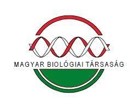Biodiverzitással összefüggő kutatási eredmények kommunikációjáról és annak módszereiről
Absztrakt
A biodiverzitás megőrzése érdekében a széles körű ismeretterjesztés, a kutatási eredmények megismertetése, vagyis a különböző társadalmi csoportok irányába történő kommunikáció égető szükségessége nem vitatható. Ez a cikk a biodiverzitással összefüggő kommunikációs irodalom és az Alter-net projekt munkatársaival folytatott konzultációk főbb tanulságaira támaszkodva kommunikációs útmutatót ajánl ökológus kutatók és természetvédelmi szakemberek számára. A viselkedés- és egyéb társadalomtudományok eredményeinek alkalmazásával sikeresebb lehet a biodiverzitásról szóló üzenetek átadása, ami motiválhatja az emberek érzelemvilágát és tudatát, és elvezethet a végső célhoz, a földi élet sokféleségének megőrzéséhez. Egy esettanulmány, az MTA ÖBKI Berkenyeház kiállítása kapcsán megvizsgáltam ezen szempontok érvényesülését a tervezésben.
Hivatkozások
Balmford A, Bennun L, ten Brink B. et al. (2005): The Convention on Biological Diversity's 2010 target. - Science 307: 212—213.
Bator, R.J. & Cialdini, R.B. (2000): The Application of Persuasion Theory to the Development of Effective Proenvironmental Public Service Announcements. - Journal of Social Issues 56: 527 - 541.
BBSRC (2000): Communicating with the public. - Biotechnology and Biological Sciences Research Council.
Blackstock, K. L., Kelly, G. J. & Horsey, B. L. (2007): Developing and applying a framework to evaluate participatory research for sustainability. - Ecological Economics 60: 726-742.
Bredemeier, M., Dennis P. Sauberer, N., Petriccione, B., Török, K., Cocciufa, C., Morabito, G. & Pugnetti, A. (2007): Biodiversity assessment and change - the challenge of appropriate methods. In: Hester, R. E. & Harrison, M. R. (eds) Biodiversity under threat. Issues in Environmental Science and Technology, Vol. 25. - Royal Society of Chemistry Publishing, Cambridge, pp. 217—251.
Brooker, R., Young, J. C. & Watt, A. D. (2007): Climate change and biodiversity: Impacts and policy development challenges — a European case study. - Int. J. Biodiversity Science and Management. 3: 12-30.
Buijs, A., Fischer, A., Lisievici, P., Marcelová, N., Rink, D., Sedláková, J., Tátrai I. and Young, J. (2005): Deliberative events: approaches to assess public attitudes to biodiversity and biodiversity management. - Report of Work Package R5 Alter-net FP6 project, pp. 63.
Chipeniuk, R. (1995): Childhood Foraging as a Means of Acquiring Competent Human Cognition about Biodiversity. - Environment and Behavior 27: 490-512
COM (2006): Communication: Halting the loss of biodiversity by 2010 - and beyond. Sustaining Ecosystem Services for Human well-being. - European Commission, Brussels, (22.05.2006.) 216 http://ec.europa.eu/environment/nature/biodiversity/current_biodiversity_policy/biodiversity_com_2006/index_en.htm
Csíkszentmihályi M. (2007): A fejlődés útjai. A harmadik évezred pszichológiája. - Nyitott Könyvműhely, Budapest, pp.413.
Ducrotoy, J-P. (2003): Education challenges in the North Sea area. - Marine Pollution Bulletin. 47: 246-252.
EC (2004): A guide to successful communications. — European Commission, Directorate-General for Research, pp. 48.
Ehrlich, P. (2002): Human nature, nature conservation and Environmental ethics. - BioScience 52: 31-43.
ESF (2003): Science communication in Europe. - European Science Foundation Policy Briefing. http://www. esf.org
Farrior, M. (2005): Breakthrough Strategies for Engaging the Public: Emerging Trends in Communications and Social Science. Biodiversity Project, http://www.biodiversityproject.org/bpemergingtrendspaper.doc
Fischer, A. & Young, J. C. (2007): Understanding mental constructs of biodiversity: implications for biodiversity management and conservation. - Biological Conservation 136: 271-282.
Fransson, N. & Gärling, T. (1999): Environmental concern: conceptual definitions, measurement methods, and research findings. - Journal of Environmental Psychology 19: 369-382.
Goldstein, W. (2005): Some lessons on communicating biodiversity and follow up actions. IUCN http://www.iucn.org/themes/cec/biodiversity/Com_ed_for_bd_workshopJan2005.pdf
Hesselink, F. J., Goldstein, W., van Kempen, P.P., Garnett, T. & Dela, J. (2007): Communication, education and public awareness. A toolkit for the Convention on Biological Diversity, Montreal, pp. 331.
Hughes, T. P., Bellwood, D. R., Folke, C., Steneck, R. S. & Wilson, J. (2005): New paradigms for supporting the resilience of marine ecosystems. - Trends in Ecology & Evolution 20: 380-386.
IUCN (2006): Commission on Education and Communication, URL: http://www.iucn.org/themes/cec/principles/dos.htm
Juhász-Nagy, P. (1993): Természet és ember. Kis változatok egy nagy témára. - Gondolat, Budapest, pp. 245.
Kitchin, T. (2004): Assuring biodiversity. A brand-building approach. The Glasshouse Partnership. London. http://www.glasshousepartnership.com/branding.pdf#search=%22Biodiversity%20brand%22
Kontogianni, A., Tziritis, 1. & Skourtos, M. (2005): Bottom-up environmental decision making taken seriously: integrating stakeholder perceptions into scenarios of environmental change. - Human Ecology Review 12: 87—95.
KvVM (2006): Magyarország csatlakozása a „Countdown 2010” akcióhoz. Környezetvédelmi és Vízügyi Minisztérium, http://www.termeszetvedelem.hu/index.php ?pg=news_99_352
Lawton, J. (2006): European biodiversity conservation: science, policy and practice. 1st European Congress on Conservation Biology. Book of Abstracts p. 7.
LIFE Focus (2004): LIFE Focus / LIFE-Nature: communicating with stakeholders and the general public - Best practice examples for Natura 2000. European Commission, http://europa.eu.int/comm/ environment/life/infoproducts/naturecommunicating_lowres_en.pdf
Lindenberg S. & Steg, L. (2007): Normative, Gain and Hedonic Goal Frames Guiding Environmental Behavior. - Journal of Social Issue 63: 117—137
MacBeath, T. C. (2005): Knowledge sharing for sustainable development through biodiversity conservation in the Mesoamerican region. - Journal of Science Communication, 4. http://jcom.sissa.it/
McKenzie-Mohr, D. (2000): Promoting Sustainable Behavior: An Introduction to Community-Based Social Marketing. - Journal o f Social Issues 56: 543-554.
McNeely, J. A. (1995): Expanding partnership in conservation. Island Press, Washington, DC. pp. 318.
MEA 2005. Millennium Ecosystem Assessment, Ecosystems and Human Well-Being. Our human planet - Summary for Decision-Makers. Island Press, Washington D.C., pp. 109.
Metcalfe J. & Perry, D. (2001): The evaluation of science-based organisations’ communication programs. Presentation to Australian Science Communicators conference, Sydney, http://www.econnect.com.au/news_papers.htm#eval
NFÜ-KvV (2007): Nemzeti Fenntartható Fejlődési Stratégia. URL: http://www.nfu.hu/ormany_altal_ elfogadottt_nemzeti_fenntarthato_fejlodesi_strategia
Niemelä, J., Young, J., Alard, D., Askasibar, M., Henle, K., Johnson, R., Kurttila, M., Larsson, T-B., Matouch, S., Nowicki, P., Paiva, R., Portoghesi, L., Smulders, R., Stevenson, A., Tartes, U. & Watt, A. (2005): Identifying, managing and monitoring conflicts between forest biodiversity conservation and other human interests in Europe. - Forest Policy and Economics 7: 877-890.
O’Riordan, T. (2002): Protecting beyond the protected. - In: O’Riordan, T. & Stoll-Kleemann, S. (eds.) Biodiversity, sustainability and human communities: protecting beyond the protected. Cambridge Univ. Press, Cambridge, pp. 3-29
RCUK (2002): Dialogue with the public: practical quidelines. - Research Councils UK, http ://www.rcuk.ac.uk/NR/exeres/AF99FF8C-1313^1CE4-ABCl-FA82D7989BD2,frameless.htm? NRMODE=Published
Rogers, E.M. (2003): Diffusion of Innovations, Fifth Edition. New York, Free Press.
Saunders, C.D. (2003): Emerging Field of Conservation Psychology. - Human Ecology Review 10: 137-149.
Saunders, C.D. & Myers, O.E. (2003): Exploring the Potential of Conservation Psychology. - Human Ecology Review 10: Introduction
Saunders, C.D., Brook, A.T. & Myers, O.E. (2006): Using psychology to save biodiversity and human well-being. - Conservation Biology 20:702-705.
SIRC (2007): Guidelines for Scientists on communicating with the media. The Social Issues Research Centre. http://www.sirc.org/messenger/index.html
Stem, P.C., Dietz, T & Kalof, L. (1993): Value orientations, gender, and environmental concern. - Environment and Behavior 25: 322—348.
Stoll-Kleemann, S. & O’Riordan, T. (2002): Enhancing biodiversity and humanity. - In: O’Riordan, T. & Stoll-Kleemann, S. (eds.) Biodiversity, sustainability and human communities: protecting beyond the protected. Cambridge Univ. Press, Cambridge, pp. 295-310.
Thompson, C.W., Aspinall, P. & Montarzino, A. (2008): The Childhood Factor. Adult Visits to Green Places and the Significance of Childhood Experience. - Environment and Behavior 40: 111-143
Török, K. & Fodor, L. (szerk.) (2006): A Nemzeti Biodiverzitás—monitorozó Rendszer eredményei I. Élőhelyek, mohák és gombák. - Környezetvédelmi és Vízügyi Minisztérium. Budapest, pp. 197.
Turner, R. K., Paavola, J., Cooper, P., Färber, S., Jessamy, V. & Georgiou, S. (2003): Valuing nature: lessons learned and future research directions. - Ecological Economics 46: 493-510.
UNECE (1998): Aarhus Convention - Convention on access to information, public participation in decisionmaking and access to justice in environmental matters. United Nations Economic Commission for Europe, (http://www.unece.org/env/pp/)
van Boven, G. & Frits, H. 2002. Mainstreaming Biological Diversity. The role of communication, education and public awareness. CBD, UNESCO, IUCN CEC brochure, pp. 8.
van den Hove, S. (2004): Review of FP5 Biodiversity Research Projects to Assess Current and Potential Policy Impact. - Report to the European Commission Research Directorate General, Unit DM. (kézirat)
Vásárhelyi T. & Victor A. (szerk.) (1998): Nemzeti Környezeti Nevelési Stratégia, http://bocs.hu/ kornev/strateg/strat.htm
Walther G-R., Post, E., Convey, P„ Menzel, A., Parmesan, C., Beebee, T. J. C., Fromentin, J-M., Hoegh-Guldberg, O. & Bairlein, F. (2002): Ecological responses to recent climate change. - Nature 416: 389-395.






